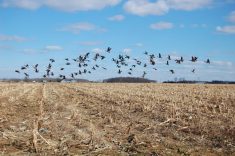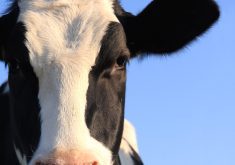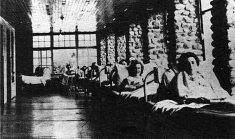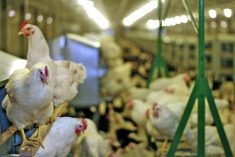Highly pathogenic avian influenza (HPAI) is still hanging around in wild birds, and extension staff at North Dakota State University urge hunters and bird owners to be careful.
Why it matters: HPAI has killed or led to the cull of 58.84 million domestic birds in the U.S. since the start of 2022 and 7.77 million in Canada since late 2021.
North Dakota itself has had no positive domestic cases since April. Manitoba, the state’s closest northern neighbour, last saw HPAI in November, as of the time of writing.
Read Also

New Crown-Indigenous partnership to spearhead Churchill expansion
Province announces new Manitoba Crown-Indigenous Corporation to co-ordinate Port of Churchill Plus revamp, bolster northern development and trade
The same cannot be said elsewhere in the U.S. and Canada. Although case numbers pale in comparison to the peaks of 2022, three states in the U.S. (South Dakota, Idaho and New Jersey) confirmed infections since the start of September, affecting about half a million domestic birds. The number is mostly attributed to a single infected turkey operation in South Dakota, according to the U.S. Department of Agriculture.
The Canadian Food Inspection Agency has confirmed six cases since the start of September, five in Alberta and one in Saskatchewan.
NDSU staff warn that the risk of transmission will increase as fall migration continues.
Hunters take heed
Hunters should be aware of the risk of HPAI in wildlife and use measures to prevent spread to domestic poultry. They should also watch for birds with neurological symptoms that might signal infection.
Dr. Gerald Stokka, NDSU Extension veterinarian and livestock stewardship specialist, noted the increase of exposure risk for hunters.
“Hunters should dress game birds in the field when possible and practice good biosecurity to prevent any potential disease spread,” he said.
They should also avoid eating, drinking or smoking while cleaning game and beware of letting blood or other fluids contact their own eyes, mouth or nose, according to the North Dakota Game and Fish Department. Hands, utensils and other surfaces should be washed with hot, soapy water after cleaning is done.
“There is no evidence that anyone has contracted the virus from eating a fully cooked bird, either domestic or wild,” said Julie Garden-Robinson, NDSU Extension food and nutrition specialist, noting that, whether there’s a risk of bird flu or not, any wild meat should be cooked to an internal temperature of 165 F.
Dogs participating in the hunt don’t have a big risk of contracting HPAI, “however, there have been documented cases of dogs transmitting HPAI to domestic flocks,” Stokka said. “If your dog has interacted with wildlife, take measures to keep them away from poultry.”
“According to the Centers for Disease Control and Prevention, the public health risk from the current HPAI outbreak is low,” said Miranda Meehan, NDSU Extension livestock environmental stewardship specialist. “People should not handle dead wild birds and also should avoid transporting sick or dead birds.
“If you hunt and have domestic poultry and birds, do not wear hunting clothes while you are in with your birds,” she added. “Infected birds shed bird flu viruses in their saliva, mucous and feces.”
HPAI symptoms
One of the first clinical signs of the illness in domestic birds is sudden, unexplained death. Most farms with HPAI report a drop in water consumption up to 72 hours prior to the unexplained death.
In laying barns, decreased egg production and depression are signs. Purple or dry combs, being quieter than normal, frequent lying down and swelling around eyes are other symptoms.
Chickens and turkeys are most susceptible to HPAI. Waterfowl such as geese and ducks carry the virus and spread it to other birds.
“The best defence against HPAI is having a biosecurity plan in place,” said Mary Keena, NDSU Extension livestock environmental management specialist. “A biosecurity plan is critical in protecting your birds. It is your job as a flock owner to create a line of separation between your clean flock and the potential unclean issues that wildlife or visitors may bring.”
Keep out the wild
Non-lethal methods to deter wild birds are available on the U.S. Department of Agriculture’s wildlife damage webpage: https://bit.ly/deter-wild-birds.
Producers can also discourage wild birds by cleaning up litter and spilled feed around domestic poultry housing.
If anyone on a poultry farm comes in contact with or handles wild birds, they should change into clean clothes, wash their hands and disinfect footwear prior to contact with domestic birds.
Sick or deceased wild birds should be reported to local conservation staff.
Flock-to-flock
Industry can also take steps to avoid spreading HPAI between domestic flocks.
Keep distance from other flocks and restrict access to property and birds. Allow contact from people who care for the birds but minimize visitors.
If a producer has been near other poultry or poultry owners, such as at feed stores, car and truck tires should be cleaned and disinfected.
New birds should be kept separate from the rest of the flock for at least 30 days.
Shared lawn and garden equipment, tools or poultry supplies between neighbours or farms are also possible vectors.
– With files from Alexis Stockford















